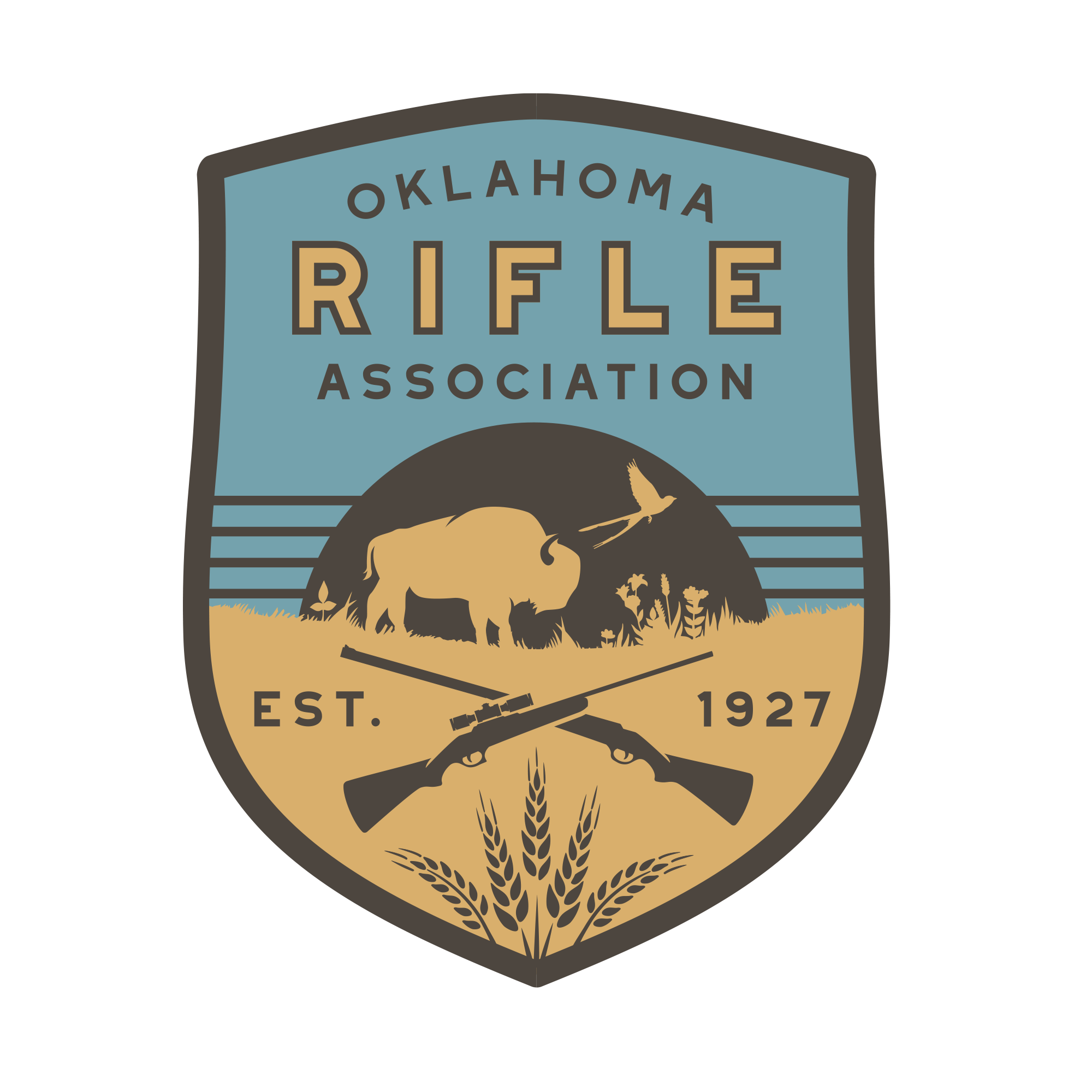James White is a WWII Marine Veteran, NRA Instructor, Former ORA President, and Distinguished Marksman. He served the ORA for many years and began the Sharpshooter. This is from the Sharpshooter Archives and originally published in July, 2015.
Each year in August the National Trophy Rifle Matches are held at Camp Perry, located on the shores of Lake Erie near the resort town of Port Clinton, Ohio. This year they will begin the first week in July.
During the week in which these matches are held, only service rifles may be used. The week includes the Infantry Trophy Match, commonly called the “Rattle Battle.” Anyone who has been present during a rapid fire stage of a big rifle match, or has been in or near a fire fight during a skirmish in a war, has heard the “Rattle of Musketry” and can understand how this match acquired its nickname.
The Infantry Trophy Match is fired by six-man teams plus a coach and team captain, at distances of 600, 500, 300, and 200 yards. The prone position is used at 600 and 500 yards. The sitting position is required at 300 yards and the standing position at 200 yards. Shooting is cold turkey. No zero or practice rounds are allowed. A shooter must know his rifle and its sight settings for each distance.
The targets are silhouettes. The “E” target used at 600 and 500 yards is 19 inches wide and 40 inches high, shaped to roughly represent a kneeling figure. The “D” target, used at 300 and 200 yards, simulates a prone figure and is 19 inches wide by about 12 inches high, with a simulated head. These are mounted on a 6 foot square backing targets. The silhouettes are dark gray in color and can be hard to see on a dark, overcast day from 600 yards away.
Each team is issued 384 rounds of ammunition. This is an average of 64 rounds per firing member of the team, but a team captain may have a firing member fire more or less than this number of rounds.
A relay of teams goes first to the 600 yard line. Shooters take their positions on the firing line with rifles loaded and locked. When the line is ready, targets are raised up out of the target pits without warning and remain exposed for 50 seconds, then are lowered into the pits. The number of rounds fired is limited only by the number that a shooter is able to get off during the 50 seconds that the targets are visible.
A hit is worth 4 points at 600 yards, 3 points at 500 yards, 2 points at 300 yards and 1 point at 200 yards. Only hits on the silhouette are marked and scored. A shooter might shoot a tight group, but if it misses the silhouette, he’ll never know it.
Each six-man team has a bank of eight targets. To the total score at each distance, a bonus is added, equal to the square of the number of targets with six hits or more. For example, if seven targets have at least six hits, the added bonus would be 7 times 7 or 49 points. This calls for a firing plan to insure at least six hits on all eight targets. One scheme is to use “swing men” at each end of the team, who fire half of their rounds at an end target and the remainder of their shots at the inboard target next to it. The other four team members fire straight away at their assigned targets. In another plan, each shooter fires a set number of rounds at an end target and then fires straight away at his own target.
When firing and scoring are complete at the 600 yard line, the entire relay moves to the 500 yard line and gets ready to fire. This same procedure continues through the 300 and 200 yard stages. Then the relay moves to the target pits to relieve the crew that has been operating targets there.
Target operation is controlled by a pit officer. Targets are on carriers which allow them to be pushed up out of the pits and then pulled down where they can’t be seen from the firing line. Each target has a person assigned to it. On command, target operators stand by their targets. At another command, all target are raised up out of the pits. Just after, or maybe even before a target gets all the way up, a bullet usually strikes it. Bullets continue to hit the target at the rate of almost one per second. Operators stand by their targets and after 50 seconds, on command, all targets are pulled into the pits.
A spotter is stuck into each bullet hole in, or touching, the silhouette. The targets are scored and the results are marked on chalk boards. The boards are hung on the targets so that they will be visible from the firing line when the targets are raised for scoring.
When the match was fired with bolt action M1903 rifles, most teams probably fired at each distance. In the present day, with semi-automatic rifles, good Army or Marine Infantry Trophy teams will hae no rounds left after the 500 yard stage. Civilian teams are not as proficient. While military teams have the opportunity to practice the course of fire, the first time the average civilian team member fires the course is when he fires for record at Camp Perry.
In the past couple of years, heavy barreled M16 or AR15 rifles, using heavy bullets, have been used in this Match. While being more prone to having its bullets deflected by strong winds, the M16 type rifle has much less recoil than an M14 or M1 rifle, so shots can be fired more rapidly.
There are no alibis in an Infantry Trophy match. If a rifle malfunctions, the shooter must clear the stoppage and continue firing if he can. If a rifle is disabled, the team will have one less rifle on the line.
Eight round clips are used when firing an M1. M14 and M16 magazines are usually loaded with 14 rounds by some teams, a convenient number that makes certain that no feeding malfunctions occur. This necessitates two magazine changes if the target is still visible; the second change is after 14 shots. A round is left in the chamber during magazine changes to eliminate spending time to close the bolt.
It’s not unusual for a skilled military shooter, using an M16, to get 40 hits at 600 yards during the 50 seconds of target exposure.
A shooter must count his shots, be conscious of the firing plan, make sure he’s firing at the right target at the right time and be aware of possible sight change or aiming commands from his coach; all while holding good sight alignment, maintaining good trigger control, firing as rapidly as possible and even remember to breathe occasionally. Another name for this match is the “Mad Minute.”
The Infantry Trophy Match is one type of shooting that demonstrates the potential of a trained rifleman armed with a good rifle that he knows intimately. To be sure, the conditions are ideal – no one is shooting back. But in the hands of men who are well trained, rifles can be potent offensive weapons.
Some who is an experienced “Rattle Battle” shooter would be a decided asset as a foxhole buddy.



